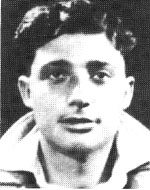Mukhtar, Aharon
Son of Georgia and Moshe. He was born in Baghdad in 1926, the capital of Iraq. When he was nine years old, he was orphaned of his mother and nine years later his father died. Aharon attended the “Menashe Salach” elementary school and completed his high school studies in the Maimonides High School in Baghdad, where he worked with his brother Isaac to iron clothes to help support the family. He was a member of the Zionist Labor and Defense Movement in Baghdad, was forbidden and illegal in Iraq in 1941. In 1941, he was saved by a pogrom against the Jews of Baghdad, and in 1943 he was admitted to the Hechalutz movement and in 1945, he joined the Kibbutz Ein Harod and was accepted as a member of the Haganah, and later left. He joined the “Nevatim” organization, which was based in Samaria and was supposed to establish its permanent place in the Negev, where he was found to be a devoted friend of Labor who knew how to bear the burden of the agriculture, and he envisioned the dream of his resurrection and prosperity. He was among those who insisted on leaving, and finally joined several members of Kibbutz Beit Eshel, believing in man, and the possibility of good neighborly relations with the surrounding Arabs, and his belief was an obstacle. On the 3rd of Elul, Aharon left his sister’s home in Jerusalem to return to his home in Beit Eshel, and when he arrived in Be’er Sheva he continued on his way to the Solel Boneh truck. When the truck reached the Be’erot Yitzhak road he passed an Arab bus heading for Gaza. He was able to open the door and jump out, but his pursuers caught him and stabbed him all over his body, and Aharon was seriously wounded and remained in a field. He was found and was transferred him to a hospital in Gaza and from there transferred to the Yarkon Hospital in Tel-Aviv. After two days of agony, on 5 Elul (21/08/1947), he died and was buried in the cemetery Nahalat Yitzhak. He left three brothers and six sisters. Details of the brutal murder appeared in the newspapers of the period. Lines of his image and his memory were published in the newsletter of Kibbutz Beit Eshel, in Tlemim, the organ of the Organization of Moshavim, and in the book “Rebels in the Wilderness.”
